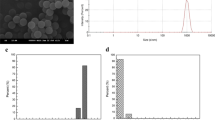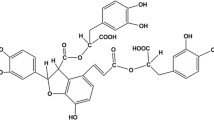Abstract
To evaluate and compare the effect of raw and processed pyritum on tibial defect healing, 32 male Sprague Dawley rats were randomly divided into four groups. After tibial defect, animals were produced and grouped: sham and control group were orally administrated with distilled water (1 mL/100 g), while treatment groups were given aqueous extracts of raw and processed pyritum (1.5 g/kg) for successive 42 days. Radiographic examination showed that bone defect healing effect of the treatment groups was obviously superior compared to that of the control group. Bone mineral density of whole tibia was increased significantly after treating with pyritum. Inductively coupled plasma-optical emission spectrometry showed that the contents of Ca, P, and Mg in callus significantly increased in the treatment groups comparing with the control. Moreover, serological analysis showed that the concentration of serum phosphorus of the treatment groups significantly increased compared with that of the control group. By in vitro study, we have evaluated the effects of drug-containing serum of raw and processed pyritum on osteoblasts. It was manifested that both the drug-containing sera of raw and processed pyritum significantly increased the mRNA levels of alkaline phosphatase and collagen type I. Protein levels of phosphorylated Smad2/3 also increased. The mRNA levels of osteocalcin and transforming growth factor β (TGF-β) type I and II receptors, as well as the protein levels of TGF-β1 in the processed groups, were higher than those in the control. In summary, both raw and processed pyritum-containing sera exhibited positive effects on osteoblasts, which maybe via the TGF-β1/Smad signaling pathway. Notably, the tibia defect healing effect of pyritum was significantly enhanced after processing.






Similar content being viewed by others
Abbreviations
- BMD:
-
Bone mineral density
- ICP-OES:
-
Inductively coupled plasma-optical emission spectrometer
- ALP:
-
Alkaline phosphatase
- Col I:
-
Type I collagen
- OC:
-
Osteocalcin
- TGF-β:
-
Transforming growth factor β
- TCM:
-
Traditional Chinese medicine
- RT-PCR:
-
Reverse transcription polymerase chain reaction
- PTFE:
-
Polytetrafluoroethylene
- α-MEM:
-
Alpha modified eagle medium
- PBS:
-
Phosphate buffer solution
- FBS:
-
Fetal bovine serum
- GAPDH:
-
Glyceraldehyde-phosphate dehydrogenase
- TBST:
-
Tris-buffered saline Tween
- S-Ca:
-
Serum Ca
- S-P:
-
Serum P
References
Einhorn TA, Gerstenfeld LC (2015) Fracture healing: mechanisms and interventions. Nat Rev Rheumatol 11(1):45–54. https://doi.org/10.1038/nrrheum.2014.164
Majeed SA (2015) Fracture healing: mechanisms and therapeutics. Osteoporos Int 26:S421–S422
Marsell R, Einhorn TA (2011) The biology of fracture healing. Injury 42(6):551–555. https://doi.org/10.1016/j.injury.2011.03.031
Corrarino JE (2015) Fracture repair: mechanisms and management. JNP—J Nurse Pract 11(10):960–967. https://doi.org/10.1016/j.nurpra.2015.07.009
Aubin JE (1998) Advances in the osteoblast lineage. Biochem Cell Biol 76(6):899–910. https://doi.org/10.1139/o99-005
Messer JG, Kilbarger AK, Erikson KM, Kipp DE (2009) Iron overload alters iron-regulatory genes and proteins, down-regulates osteoblastic phenotype, and is associated with apoptosis in fetal rat calvaria cultures. Bone 45(5):972–979. https://doi.org/10.1016/j.bone.2009.07.073
Ochiai H, Okada S, Saito A, Hoshi K, Yamashita H, Takato T, Azuma T (2012) Inhibition of insulin-like growth factor-1 (IGF-1) expression by prolonged transforming growth factor-beta1 (TGF-beta1) administration suppresses osteoblast differentiation. J Biol Chem 287(27):22654–22661. https://doi.org/10.1074/jbc.M111.279091
Laurent P, Camps J, About I (2012) Biodentine(TM) induces TGF-beta1 release from human pulp cells and early dental pulp mineralization. Int Endod J 45(5):439–448. https://doi.org/10.1111/j.1365-2591.2011.01995.x
Sowa H, Kaji H, Yamaguchi T, Sugimoto T, Chihara K (2002) Smad3 promotes alkaline phosphatase activity and mineralization of osteoblastic MC3T3-E1 cells. J Bone Miner Res 17(7):1190–1199. https://doi.org/10.1359/jbmr.2002.17.7.1190
Janssens K, ten Dijke P, Janssens S, Van Hul W (2005) Transforming growth factor-beta1 to the bone. Endocr Rev 26(6):743–774. https://doi.org/10.1210/er.2004-0001
Wildemann B, Schmidmaier G, Brenner N (2004) Quantification, localization, and expression of IGF-I and TGF-beta1 during growth factor-stimulated fracture healing. Calcif Tissue Int 74(4)
Wong RWK, Rabie ABM (2006) Traditional Chinese medicines and bone formation—a review. J Oral Maxillofac Surg 64(5):828–837. https://doi.org/10.1016/j.joms.2006.01.017
Peng LH, Ko CH, Siu SW, Koon CM, Yue GL, Cheng WH, Lau TW, Han QB, Ng KM, Fung KP, Lau CBS, Leung PC (2010) In vitro & in vivo assessment of a herbal formula used topically for bone fracture treatment. J Ethnopharmacol 131(2):282–289. https://doi.org/10.1016/j.jep.2010.06.039
Liu L, Zhao GH, Gao QQ, Chen YJ, Chen ZP, Xu ZS, Li WD (2017) Changes of mineralogical characteristics and osteoblast activities of raw and processed pyrites. RSC Adv 7(45):28373–28382. https://doi.org/10.1039/c7ra03970k
Hwang J, Do Hur S, Seo YB (2004) Mineralogical and chemical changes in pyrite after traditional processing for use in medicines. Am J Chin Med 32(6):907–919. https://doi.org/10.1142/s0192415x0400251x
Wu HH, C.J. (2012) The processing of Chinese material. Press of People’s Medical Publishing House, Beijing
Genhua Z, Zebin W, Qianqian G, Zhipeng C, Baochang C, Weidong L (2015) Studies on pyritum before and after processing in promoting fracture healing and its mechanism. Tradis Chin Drug Res Clin Pharmacol 26(4):481–485
Pang Rj (2007) Bioleaching pyritum and testing the efficacy action of its leachate. Dissertation, Lan zhou University
Mao BF (2009) Experimental investigation on Chinese medicine pyritum with low frequency ultrasound treatment for heal fracture. Dissertation, Liaoning University of Traditional Chinese Medicine
Kim JM, Lee JH, Lee GS, Noh EM, Song HK, Gu DR, Kim SC, Lee SH, Kwon KB, Lee YR (2017) Sophorae Flos extract inhibits RANKL-induced osteoclast differentiation by suppressing the NF-kappaB/NFATc1 pathway in mouse bone marrow cells. BMC Complement Altern Med 17(1):164. https://doi.org/10.1186/s12906-016-1550-x
Mackenzie EL, Iwasaki K, Tsuji Y (2008) Intracellular iron transport and storage: from molecular mechanisms to health implications. Antioxid Redox Signal 10(6):997–1030. https://doi.org/10.1089/ars.007.1893
Bassett CAL (1962) Current concepts of bone formation. J Bone Joint Surg 44(6):1217–1219
Nagata M, Lonnerdal B (2011) Role of zinc in cellular zinc trafficking and mineralization in a murine osteoblast-like cell line. J Nutr Biochem 22(2):172–178. https://doi.org/10.1016/j.jnutbio.2010.01.003
Yusa K, Yamamoto O, Fukuda M, Koyota S, Koizumi Y, Sugiyama T (2011) In vitro prominent bone regeneration by release zinc ion from Zn-modified implant. Biochem Biophys Res Commun 412(2):273–278. https://doi.org/10.1016/.bbrc.2011.07.082
Qiao YQ, Zhang WJ, Tian P, Meng FH, Zhu HQ, Jiang XQ, Liu XY, Chu PK (2014) Stimulation of bone growth following zinc incorporation into biomaterials. Biomaterials 35(25):6882–6897. https://doi.org/10.1016/j.biomaterials.2014.04.101
Wang J MX-y, Feng Y-f, Ma T-c, Lei W, Wang L (2015) Promotive effect of magnesium ions on viability and differentiation of osteoblasts and the underlying mechanism. Prog Mod Biomed 15(15):2836–2839
Hu YC, Cheng HL, Hsieh BS, Huang LW, Huang TC, Chang KL (2012) Arsenic trioxide affects bone remodeling by effects on osteoblast differentiation and function. Bone 50(6):1406–1415. https://doi.org/10.1016/j.bone.2012.03.012
Cui C, Wang S, Myneni VD, Hitomi K, Kaartinen MT (2014) Transglutaminase activity arising from Factor XIIIA is required for stabilization and conversion of plasma fibronectin into matrix in osteoblast cultures. Bone 59:127–138. https://doi.org/10.1016/j.bone.2013.11.006
Foster LJ, Zeemann PA, Li C, Mann M, Jensen ON, Kassem M (2005) Differential expression profiling of membrane proteins by quantitative proteomics in a human mesenchymal stem cell line undergoing osteoblast differentiation. Stem Cells 23(9):1367–1377. https://doi.org/10.1634/stemcells.2004-0372
Yoshikawa Y, Kode A, Xu L, Mosialou I, Silva BC, Ferron M, Clemens TL, Economides AN, Kousteni S (2011) Genetic evidence points to an osteocalcin-independent influence of osteoblasts on energy metabolism. J Bone Miner Res 26(9):2012–2025. https://doi.org/10.1002/jbmr.417
Franceschi R (1999) The developmental control of osteoblast-specific gene expression: role of specific transcription factors and the extracellular matrix environment. Crit Rev Oral Biol Med 10(1):40–57
Renny T, Franceschi BSI (1992) Relationship between collagen synthesis and expression of the osteoblast phenotype in MC3T3-E1 cells. J Bone Miner Res 7(2):235–246
Franceschi RT, Ge C, Xiao G, Roca H, Jiang D (2009) Transcriptional regulation of osteoblasts. Cells Tissues Organs 189(1–4):144–152. https://doi.org/10.1159/000151747
Kristensen HB, Andersen TL, Marcussen N, Rolighed L, Delaisse JM (2014) Osteoblast recruitment routes in human cancellous bone remodeling. Am J Pathol 184(3):778–789. https://doi.org/10.1016/j.ajpath.2013.11.022
Mu Y, Gudey SK, Landstrom M (2012) Non-Smad signaling pathways. Cell Tissue Res 347(1):11–20. https://doi.org/10.1007/s00441-011-1201-y
Chen M, Lv Z, Jiang S (2011) The effects of triptolide on airway remodelling and transforming growth factor-beta(1)/Smad signalling pathway in ovalbumin-sensitized mice. Immunology 132(3):376–384. https://doi.org/10.1111/j.1365-2567.2010.03392.x
Oryan A, Alidadi S, Bigham-Sadegh A, Moshiri A (2017) Effectiveness of tissue engineered based platelet gel embedded chitosan scaffold on experimentally induced critical sized segmental bone defect model in rat. Injury 48:1466–1474. https://doi.org/10.1016/j.injury.2017.04.044
Acknowledgements
This work was supported by grants from the National Natural Science Foundation of China (81373970) and Jiangsu Qinglan Project (2014).
Author information
Authors and Affiliations
Corresponding authors
Ethics declarations
The study was approved by the Nanjing University of Chinese Medicine Committee on Laboratory Animal Care, and all animals received humane care according to the National Institutes of Health (USA) guidelines. All possible efforts were made to minimize the animals’ suffering and to reduce the number of animals used.
Conflict of Interest
The authors declare that they have no conflicts of interest.
Rights and permissions
About this article
Cite this article
Zhu, X., Gao, Q., Zhao, G. et al. Comparison Study of Bone Defect Healing Effect of Raw and Processed Pyritum in Rats. Biol Trace Elem Res 184, 136–147 (2018). https://doi.org/10.1007/s12011-017-1166-0
Received:
Accepted:
Published:
Issue Date:
DOI: https://doi.org/10.1007/s12011-017-1166-0




